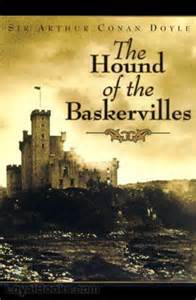Poul Anderson, Harry Turtledove and SM Stirling have written works of fiction featuring alternative timelines. Either an entire narrative is set inside an alternative timeline or the characters travel between such timelines. Before considering such complexities, let us instead discuss the already sufficiently complex case of an ordinary single-timeline novel, whether historical, contemporary or futuristic.
Arthur Conan Doyle's The Hound Of The Baskervilles is an appropriate example, given the strong Holmesian connections in several of Anderson's works. The Hound... is set in a world where:
Sherlock Holmes was a real, indeed famous, person;
Baskerville Hall was a real place with a legendary hound;
a particular sequence of events occurred in and around the Hall;
Dr Watson wrote a true account of these events - "true" unless and until a sequel reveals that Watson was dishonest or mistaken about any of the details.
In our world:
Sherlock Holmes is a universally recognized fictitious character;
Baskerville Hall does not exist;
the events narrated in the novel did not occur;
Arthur Conan Doyle wrote a fictitious account of these events as narrated by Watson.
The text of The Hound... exists in both worlds. However, in Holmes' world, it is a factual account written by Watson whereas, in our world, it is a fictional account written by Doyle. Not every novel narrated in the first person exists as a text in its fictional world. We must usually assume, if we think about it, that the viewpoint character is recounting his experiences to a friend - and is sometimes revealing secrets that should not be made public in that fictional world.
Thus, every work of fiction is set in a timeline that differs or diverges from the timeline inhabited by its readers. It follows that every work of fiction is set in an alternative timeline even though we do not usually have any reason to think of them in this way.

No comments:
Post a Comment